Wander.al uses cookies to improve user experience. By using our website you consent to all cookies in accordance with our Cookie Policy.


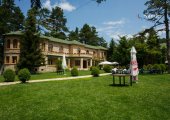

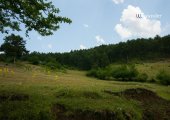
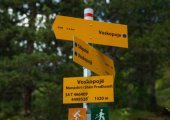

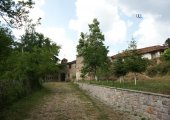
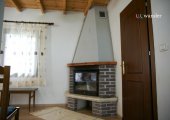

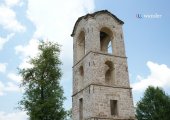
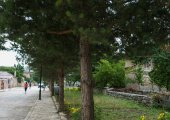
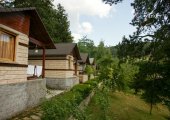
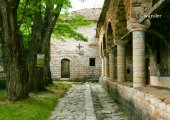
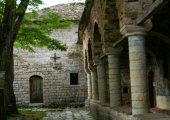

















Moscopole (Albanian: Voskopojë) was a cultural and commercial center of the Aromanians, and now a small village in Korçë County, modern southeastern Albania. The population at the 2011 census was 1,058. At its peak, in the mid 18th century, it hosted the first printing press in the Balkans outside Istanbul, educational institutions and numerous churches.
Historians have attributed the decline of the city to a series of raids by Muslim Albanian bandits, that almost destroyed the town in 1769 following the participation of the residents in the preparations for the Orlov Revolt in 1770, and culminated with the abandoning and destruction of Moscopole in 1788. Moscopole, once a prosperous city, was reduced to a small village by Ali Pasha. According to another opinion, the city's decline was mainly due to the relocation of the trade routes in central and eastern Europe following the aforementioned raids. Today Moscopole, known as Voskopojë, is a small mountain village, and along with a few other local settlements is considered a holy place by local Orthodox Christians. It was one of the original homelands of the Aromanian diaspora.
Voskopoja is located at a distance of 21 km from Korçë, in the mountains of southeastern Albania, at an altitude of 1160 meters. Because of its high altitude, Voskopoja is a ski resort.
Although located in a rather isolated place in the mountains of southern Albania, the city rose to become the most important center of the Aromanians. Moscopole was a small settlement until the end of the 17th century, but afterwards showed a remarkable financial and cultural development. Some writers have claimed that Moscopole in its glory days (1730–1760) had as many as 70,000 inhabitants; other estimates placed its population closer to 35,000; and others say that Moschopolis was certainly not among the largest Balkan cities of the 18th century".
According to the Swedish historian Johann Thunmann who visited Moscopole and wrote a history of the Aromanians in 1774, everyone in the city spoke Aromanian; many also spoke Greek, which was used for writing contracts, in fact the city is said to have been mainly populated by Vlachs/Aromanians. The fact was confirmed by a 1935 analysis of the family names shows that the majority of the population were indeed Vlachs, but there were also Greeks and Albanians present in the city.
Historically the main economic activity of the city was the livestock farming. The alternative name "Voskopolis" means "City of shepherds". This activity led to the establishment of wool processing and carpet manufacturing units and the development of tanneries, while other locals became metal workers, silver and copper smiths. During the middle of the 18th century, the city became an important economic center whose influence spread over the boundaries of the Archbishopric of Ohrid, and reached further the Ottoman ruled Eastern-Orthodox world: the trade involved as far as the Archduchy of Austria, the Kingdom of Hungary, and the Upper Saxony. Until 1769, the town traded on a large scale with renowned European commercial centres of that time, such as Venice, Vienna and Leipzig.
A printing press was also operating in Moscopole which was the second one in the of Ottoman Europe after that of Constantinople. This establishment produced a total of nineteen books, mainly Services to the Saints but also the Introduction of Grammar by the local scholar Theodore Kavalliotis. The later became director of the city's prestigious educational institution, which from 1744 was known as New Academy or Hellenikon Frontistirion, sponsored by the wealthy merchants of the diaspora. Moreover, the city hosted an orphanage, known as Orphanodioiketerion, probably the first in the post-Byzantine Orthodox world, a hospital and a total of 24 churches.
A cultural effervescence arose in Moscopole, and many authors published their works in both the Greek language (which was the language of culture of the Balkans at the time) and Aromanian, written in the Greek alphabet. In 1770, the first dictionary of four modern Balkan languages (Greek, Albanian, Vlach/Aromanian and Bulgarian) was published here. Daniel Moscopolites a Vlach-speaking native priest of Moscopole, compiled a quadrilingual lexicon of Greek, Vlach, Bulgarian and Albanian, that aimed at the hellenization of the non-Greek-speaking Christian communities in the Balkans. Due to the high level of intellectual activity and Greek education Moscopole was nicknamed as New Athens or New Mystra.
The 1769 sacking and pillaging by Muslim Albanian troops was just the first of a series of attacks, which culminated with the razing of 1788 by the troops of Ali Pasha. Moscopole was practically destroyed by this attack, while some of its commerce shifted to nearby Korçë and Berat.
The survivors were thus forced to flee, most of them emigrating mainly to Thessaly and Macedonia. Some of the commercial elite moved to the Archduchy of Austria, and the Kingdom of Hungary especially to the respective capitals of Vienna and Budapest, but also to Transylvania, where they had an important role in the early National awakening of Romania. The city never rose back to its earlier status. However, a new school was established at the end of the 18th century whose headmaster in 1802 was Daniel Moscopolites. This school functioned the following decades, thanks to donations and bequests by baron Simon Sinas, a member of the diaspora.
Of the old city, six Orthodox churches (one in a very ruined state), a bridge and a monastery survive. In 2002, the five standing churches were put on the World Monuments Fund's Watch List of 100 Most Endangered Sites.
The remaining churches in the region are among the most representative of 18th century ecclesiastical art in the Balkans. Characteristically, their murals are comparable to that in the large monastic centres at Mount Athos and Meteora in Greece. The architectural design is in general specific and identical: a large three-aisled basilica with a gable roof. The churches are single-apsed, with a wide altar apse and internal niches that serve as prothesis and diaconicon. Most churches also have one niche, each on the northern and southern walls, next to the prothesis and the diakonicon. Along the southern side there is an arched porch.
From 1722 to 1726 David Selenica and his two disciples Kostandin and Kristo painted the murals, the frescoes and the basilica of the church of Saint Nicholas in Moscopole.
David Selenica or Selenicasi was an Albanian painter of the late 17th and the early 18th century. He is regarded as one of the most prominent figures of Albanian post-Byzantine icon painting.
Selenicasi, also known as David of Selenica was born in the late 17th century in Selenicë, a village in the region of Kolonjë. He died in the mid-18th century near Korçë.
David Selenicasi's work influenced many of his contemporaries like Kostandin Shpataraku, the brothers Kostandin and Athanas Zografi and works of the early 19th century. He is regarded as the founder of a distinct national school of painters based in Korçë.
His works are exhibited in the National Historical Museum of Albania in Tirana in the pavilion of icon painting and the National Museum of Medieval Art of Korçë. Other works of David Selenicasi are found in several monasteries of Mount Athos. In Moscopole seven of his murals have been preserved.
In 1715 he painted frescoes in one of the chapels of the monastery of the Great Lavra, the first monastery built on Mount Athos. In 1727 he painted the murals and the frescoes of the church of Saint John the Baptist in Kastoria, and the church of Blessed Virgin Mary in Thessaloniki.
In contrast to other painters of his era, Selenica uses bright colours in his paintings and icons. Selenica combines elements of Byzantine art of the Paleologan era and Venetian school of art.
David Selenicasi's work influenced many of his contemporaries like Kostandin Shpataraku, the brothers Kostandin and Athanas Zografi and works of the early 19th century. He is regarded as the founder of a distinct national school of painters based in Korçë.
Source: Wikipedia.org